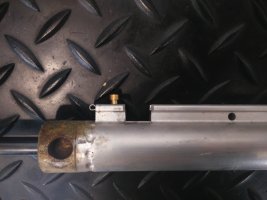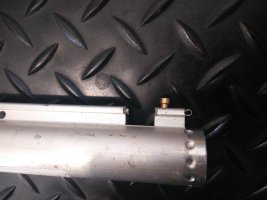The system of the California roof is wrong.
Where the hydraulic system in a convertible car is regulated with shut off valves, the hydraulic system of the California is only regulated by hydraulic pressure.
A convertible car roof is regulated by shut off valves. The idea for it is because it is more complex. First you have an electric motor, disengaging the hooks that keep the roof fixed to the top of the windscreen frame. Then the rear part of the convertible roof is hydraulically operated so it lifts only the rear part. Then the roof cover is hydraulically operated to open. Then the rear part of the roof is lowered, and then the rest of the roof is hydraulically retracted into the roof box. The last part is lowering the roof cover again.
Every step is controlled separately, and apart from the electric motor with the hydraulic fluid reservoir, you also have a block with shut off valves, electrically operated.
The real difference is that when the roof is completely up or down, the hydraulic pressure is released, or isn't under external weight pressure.
If you open the roof halfway, after a few minutes the pressure will be released, and the roof will drop down.
The hydraulic system in the California is much simpeler. It only operates for the rams to extract or retract. Once the roof is opened/lowered, and you stop the opening/lowering, the roof rests on the hydraulic pressure in the system. With the heat, causing the pressure to rise, and making the fluid more fluidly (?), a miniscule internal leak (not really seals, but more balls closing the internal tube in the aluminium mechanical controller between the hydraulic reservoir and electric motor), or pressure release (mechanical) valve will let the hydraulic fluid return to the reservoir, dropping the pressure on one or the other side.
The first rams exploded due to the threaded end cap. When the temperature got too high, the pressure got too high, and the end caps were pushed outwards, breaking the thread, causing the roof to collapse.
The newer rams don't have the thread anymore, but they are riveted (?) togheter.
View attachment 129991
View attachment 129992
So now they don't "explode" anymore, but the pressure gets lost through the pump.
If they would make the roof rest when it's completely open, the roof wouldn't sag anymore, and the hydraulic system wouldn't suffer that much in warm conditions.
Now the roof stays closed and opened only under hydraulic pressure. And there is the faulty design of the system.

















